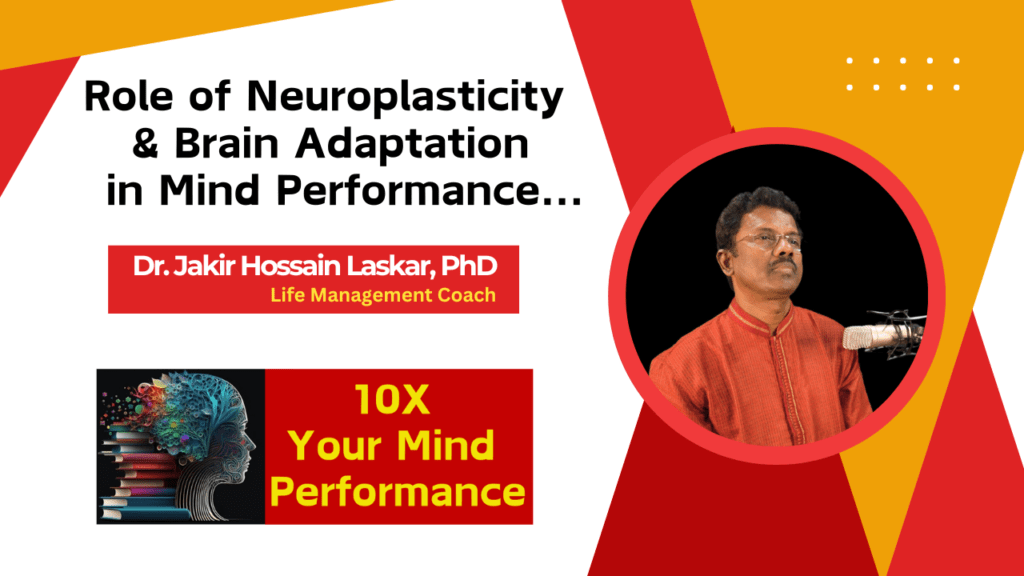Dr. Jakir Hossain Laskar, PhD
7 Effective Ways to Tackle Mental Trauma Stored in the Subconscious
Revisiting trauma stored in the subconscious can involve understanding, releasing and reprogramming of an intricate arrangement of emotions and mental frameworks. This is a detailed elaboration of the plans, including actual cases and techniques that can work in real life.
- Start by Recognizing the Trauma
Why It’s Important: Not confronting trauma only does more harm. It allows pain to settle in people’s subconscious and affects behaviors and thoughts. Hence, it is better to sort things out by addressing them.
Strategy:
Understand and remind yourself that feeling pain is a human thing and self-loathe is unnecessary.
For example, in the beginning, try random journaling with ideas like:
What was the incident or moment that brought the most emotional distress to my life?
What thoughts did I have during that moment, and what went through my mind after it ended?
Example:
If a child is picked on a lot, one of the first thoughts that come to them after the torment is, how unworthy they feel. These emotions are the building blocks that need to be tackled in order to promote healing.
- Dive Deep in Defining Trauma and Its Impact
Why It’s Important: Trauma, when left unchecked has a tendency of altering a person’s brain. Forms the way they think, the events that set them off and how they reacted into it. Tying these connections together gives the person more insight and allows the user to better themselves by changing their patterns.
Strategy:
Design a trauma timeline and mark all notable dates: Important milestones affecting your thoughts and actions span your life and identify them.
When I reflect on the past events of my life, a question always seems to pop in my head.
Is there something that makes me overreact involuntarily? Sometimes anger white outs the reasoning of what is happening around.
IAs this issue persists in more than one relationship?
If its pattern after its development, how does it affect one? For example, I can see how abuse relationships eventually makes people aggressive. The level of aggressiveness is not the issue as the fact that it exists in the first place.
- Practice Mindfulness and Meditation
It doesn’t matter how small scale the changes are, every single one of them is an improvement. Once trauma surfaces and varies one’s understanding of a certain subject, it becomes memory.
Strategy:
Start with long deep breaths and close your eyes and inhale from your nose speaking it. While speaking inhale from your nose and exclaim with your mouth the words ‘peace, peace, peace’ and march forward.
Meditative journaling: Right after meditating one must write down everything they can think of freely without any self restriction.
Example:
Earlier in the session while conversing, I felt tension or discomfort around my stomach. It is where a part of your body registers every trauma but is too prideful to content with it.
4. Why It’s Important: These techniques help you turn back the time so that every memory unlocks a shape that is never identical to the original
Strategy:
One must work with a certified professional that deals with mental health issues. Do try your hardest to relive and reframe every traumatic event.Use imaginings to create positive even happy self talk. For instance:
Recollect your younger self at a repulsive event that needed consolation and care.
Example:
If as a child, you were made to feel humiliated every once in awhile, then a practical visualization exercise in hypnotherapy, could have you imagine handling the situation, automatically exchanging fear for confidence.
- Use Positive Affirmations for Programming
Why It’s Important: The ability to overcome negative reactions from trauma can be bettered by constantly repeating positive affirmations which also create new memories. The body remembers new experiences and adapts to them.
Strategy:
Find out the negative impacts of trauma on the person, and do the following: –
Negative belief: I am not enough.
Affirmation: I am enough.
Put the affirmations where they can be seen daily (on showers, table tops) or write your own music and recite the affirmations every day.
Example:
If you feel unloved because of a failed relationship, saying affirmations such as “I invite love and kindness towards myself” for at least a month consistently can change your perception.
- Get Yourself Treated by a Professional
Why It’s Important: A therapist has organized sessions that make effective use of researched techniques to address trauma and its effects without imposing risks.
Strategy:
Find trauma-specific treatment options including, but not limited to EMDR therapy: EMDR: is an abbreviation for Eye Movement Desensitizing and Reprocessing, a type of therapy that helps individuals experiencing post-traumatic stress disorder by allowing them to reprocess their memories. Somatic Experiencing: is a treatment that aims to relieve the symptoms of posttraumatic stress disorder by resolving the individual’s stored trauma. CBT: eliminating harmful schemas by means of cognitive relaxation and removing distressing thoughts.
Example:
For instance, someone who had a disagreeable experience as a rider in a car would have an EMDR session and this way they would decrease the emotional burden and allow such individuals to get behind the wheel without fear.
- Start Integrating Holistic Healing Methods
Why It’s Essential : Trauma is transferred to the body in the form of tension or energy blockages. Holistic methods are used to unblock emotional energy and ensure the alignment between the body and the mind.
Strategy:
Yoga: Aim to perform poses that are heart opening and are releasing such as Camel Pose and Child’s Pose.
Reiki Healing: Engage an energy healer to help with healing the trauma trapped within the energy fields.
Breathwork: Use deep breathing practices in order to soothe the nervous system.
Example:
A person who is worried about a loss is likely to go for a reiki treatment to eliminate social inhibitions or perform yoga to remove tension building in the chest due to grief.
The Healing Blueprint
For subconscious trauma to disappear , it would require fusing all the strategies together.
Approach triggers by first taking mindfulness (Step 3).
Take a Journal about what are the emotions (Step 1)
Work with a therapist and start reprocessing profound problems (Step 6).
Begin with Visualisation and Affirmations to change embedded beliefs (emphasize Steps 4 and 5).
Practice yoga or go for reiki to eliminate tension in the body (Step 7).
Concluding with healing trauma
This step is the most critical one where we deal with the pain in one’s subconscious. There are many ways in which one can approach it, and it is not easy. However, it is important to remain consistent and caring to oneself. It takes time, but through such efforts, one can work towards unleashing their full potential.


